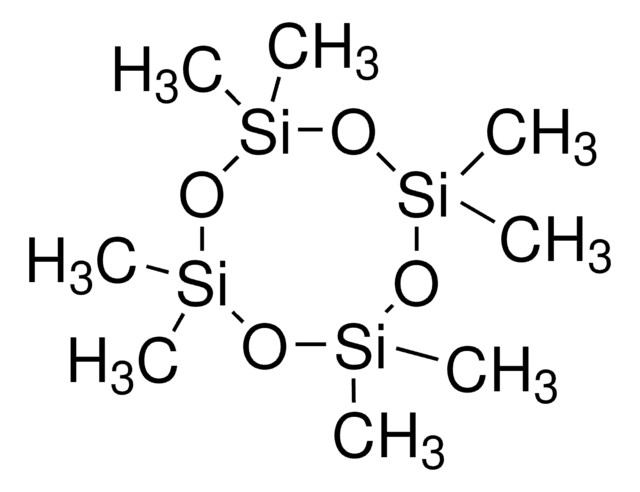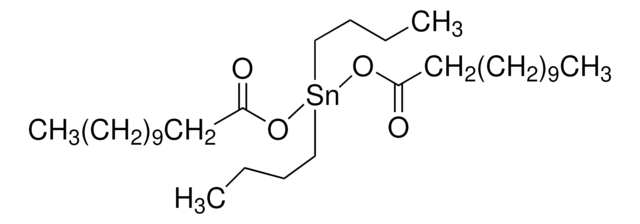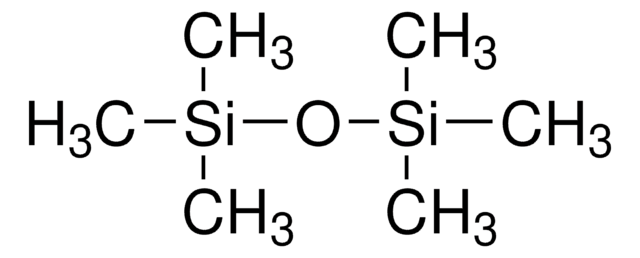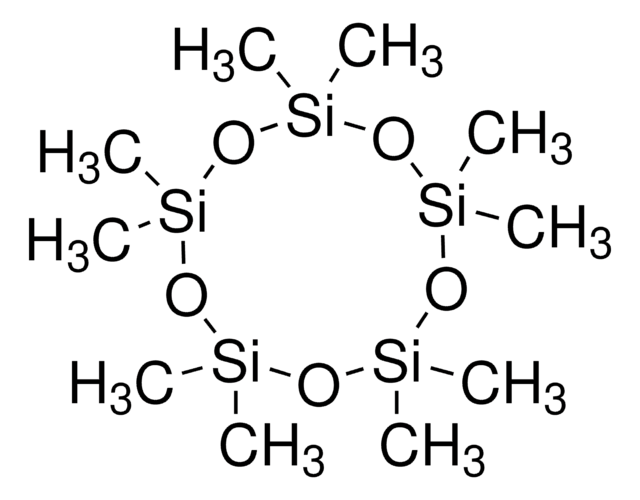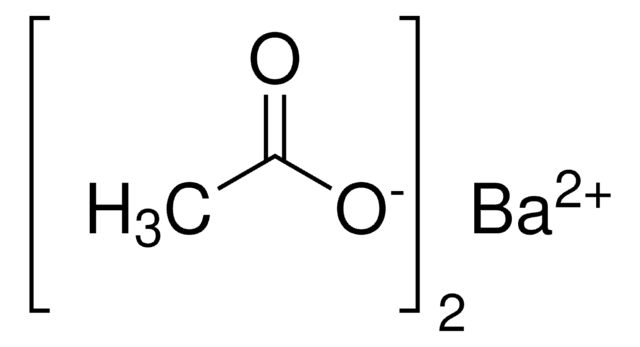244112
Titanium(IV) butoxide
reagent grade, 97%
Synonym(s):
Orthotitanic acid tetrabutylester, TNBT, TYZOR® TBT organic titanate, Tetrabutyl orthotitanate, Tetrabutyl titanate
About This Item
Recommended Products
grade
reagent grade
Assay
97%
form
liquid (or viscous liquid)
liquid
reaction suitability
core: titanium
reagent type: catalyst
refractive index
n20/D 1.491 (lit.)
bp
206 °C/10 mmHg (lit.)
density
1.00 g/mL at 20 °C (lit.)
SMILES string
CCCCO[Ti](OCCCC)(OCCCC)OCCCC
InChI
1S/4C4H9O.Ti/c4*1-2-3-4-5;/h4*2-4H2,1H3;/q4*-1;+4
InChI key
YHWCPXVTRSHPNY-UHFFFAOYSA-N
Looking for similar products? Visit Product Comparison Guide
General description
Application
- A catalyst in the transesterification of methyl methacrylate and synthesis of renewable polyesters from vanillin-based dimers.
- A precursor to synthesize ferroelectric Bi4Ti3O12 thin films.
- A catalyst in the synthesis of aliphatic−aromatic copolyesters through polycondensation reactions.
- A precursor for synthesis ofTitanium dioxide (TiO2) nanocomposite powders prepared via sol-gel synthesis used for photocatalytic degradation of pollutants.
- A precursor for synthesis ofTiO₂ nanoparticles (anatase and rutile) via polyol-mediated synthesis technique.
- A precursor for synthesis ofTitanium dioxide nanorods via hydrothermal method which are utilized as electron transport layers (ETLs) in perovskite solar cells (PSCs)
- A precursor for synthesis of TiO2 coatings enhance the stability and luminescent properties of Rb0.1Cs0.9PbBrI2 perovskite quantum dots (PQDs) for white-emitting diodes (WLEDs) and color conversion in display devices.
Features and Benefits
- TBO has a low viscosity, enables improved penetration and uniform coating on various substrates.
- It exhibits good thermal stability, which is advantageous during high-temperature processing, allowing it to maintain its chemical integrity and performance under elevated temperatures.
- It is soluble in anhydrous ethanol, ether, benzene and chloroform.
Legal Information
Signal Word
Danger
Hazard Statements
Precautionary Statements
Hazard Classifications
Eye Dam. 1 - Flam. Liq. 3 - Skin Irrit. 2 - STOT SE 3
Target Organs
Central nervous system, Respiratory system
Storage Class Code
3 - Flammable liquids
WGK
WGK 1
Flash Point(F)
107.6 °F - Pensky-Martens closed cup
Flash Point(C)
42 °C - Pensky-Martens closed cup
Personal Protective Equipment
Choose from one of the most recent versions:
Already Own This Product?
Find documentation for the products that you have recently purchased in the Document Library.
Customers Also Viewed
Articles
Mesoporous Oxides and Their Applications to Hydrogen Storage
Titanium dioxide (TiO2) is an important n-type semiconducting material that shows interesting characteristics such as photoswitchable surface wettability, high photocatalytic activity, bistable electrical resistance states and high electron drift mobility.
A Review of Mesoporous TiO2 Thin Films
Thermoelectric Performance of Perovskite-type Oxide Materials
Protocols
Monodisperse, surfactant-free polymer spheres for use as colloidal crystal templates can be easily obtained in reasonably large quantities. Typical synthesis methods for poly(methyl methacrylate) (PMMA) and poly(styrene) (PS) by emulsifier free emulsion polymerization are described below and yield spheres several hundred nanometers in diameter.
Our team of scientists has experience in all areas of research including Life Science, Material Science, Chemical Synthesis, Chromatography, Analytical and many others.
Contact Technical Service

